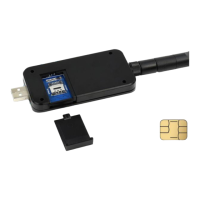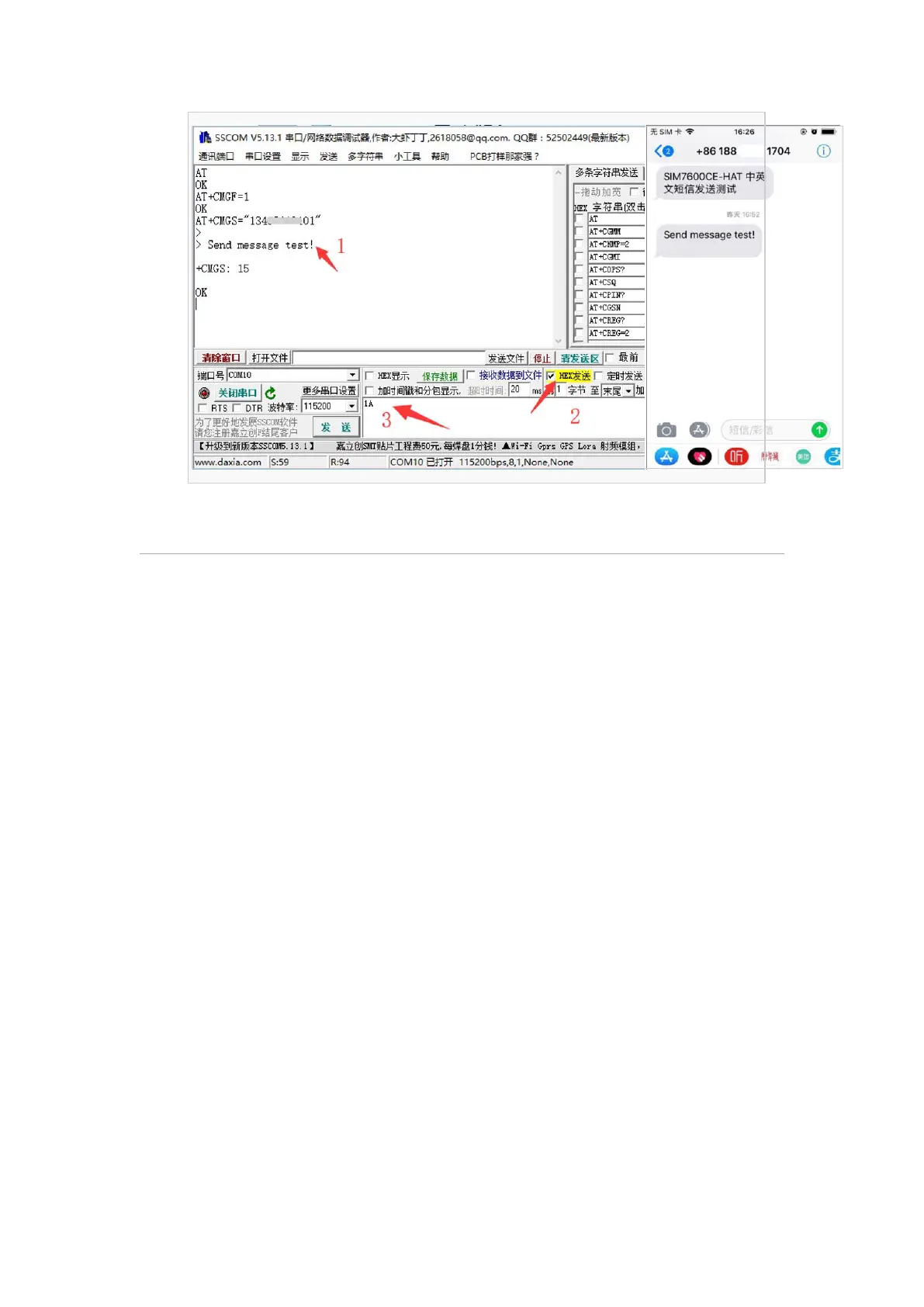Receive Message
1.
Send a message from phone to the SIM7600 DONGLE: “This is a receive test for
SIM7600X!”
2.
The serial port will print data when receiving, for example: “SM”, 20, it means
that there are 20 messages in SM and the last message received is the 20th
message.
3. Read message:AT+CMGR=20 Read the 20th message 读(AT+CMGL="ALL" to read
all messages)
4. Delete message:AT+CMGD=20
5. Convert the message to string by convertor.。

